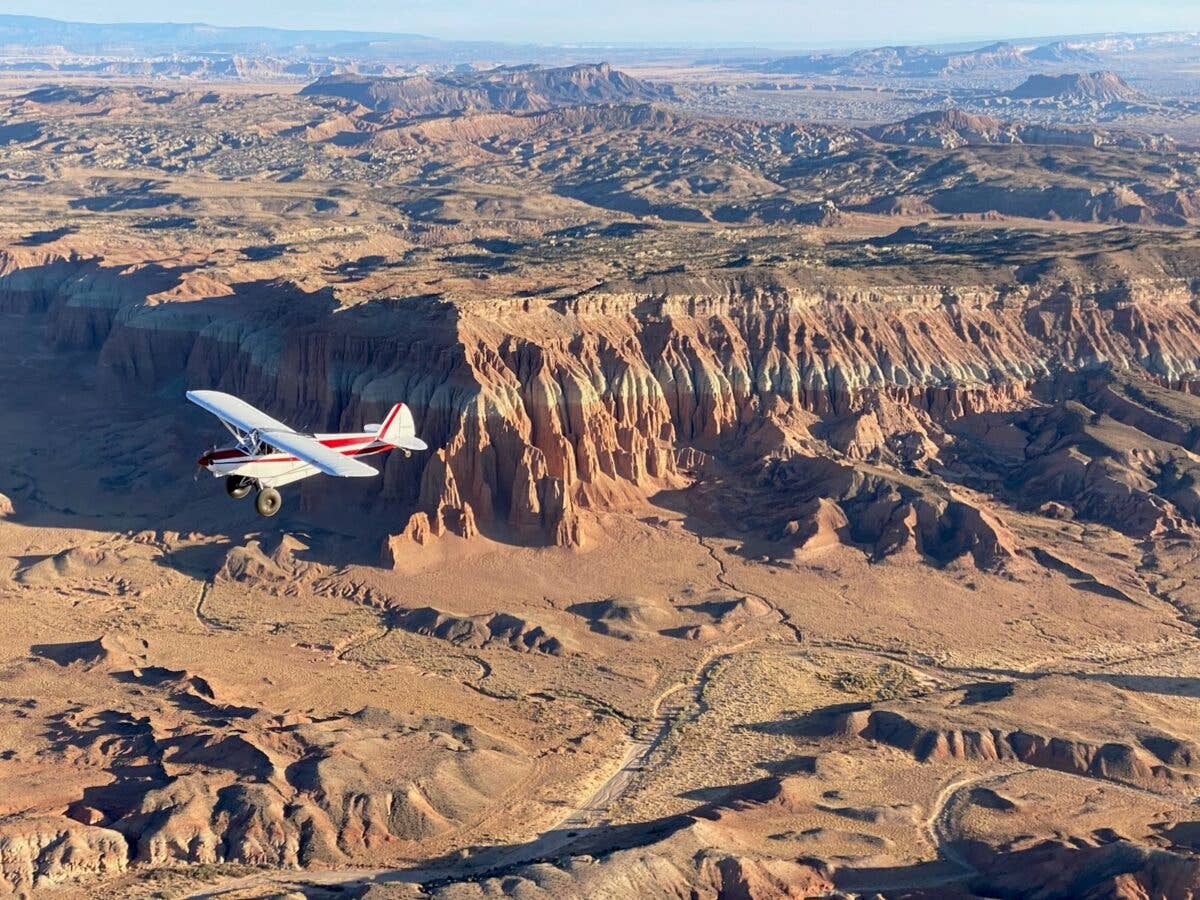Utah Pilots Object to Proposed Ordinance Targeting Backcountry Flying
The proposed ordinance that would shutter off-airport takeoffs and landings by motorized aircraft operating in outdoor recreation areas.

The County Board of Commissioners in Grand County, Utah, heard more than an hour of testimony regarding a proposed ordinance impacting off-airport takeoffs and landings. [Courtesy John Evans II]
One of the truths of aviation is that annoying or foolish behavior of one pilot can impact the rest of us. This is evidenced this week in Moab, Grand County, Utah, where the County Board of Commissioners heard more than an hour of public comment concerning a proposed ordinance that would shutter off-airport takeoffs and landings by motorized aircraft operating in outdoor recreation areas that was ostensibly drafted in response to noise complaints.
The proposed ordinance, which would amend Title 17 of the Grand County General Ordinances to prohibit aircraft takeoffs and landings outside of approved aircraft takeoff and landing areas, reads "No person shall takeoff or land an aircraft except at an approved aircraft takeoff and landing area."
An approved aircraft takeoff and landing area is defined as a location or facility that has been explicitly approved, by the appropriate local, state, or federal land managing entity for takeoffs and landings of the type of aircraft in question.
The ordinance defines aircraft as motorized airborne vehicles, including fixed-wing airplanes, helicopters, motorized paragliders, and ultralight aircraft. The ordinance does not included unmanned aerial vehicles, nor does it apply to temporary and occasional takeoffs and landings for aviation activities which are conducted by or on behalf of governmental entities, for medical rescue or emergency purposes, during agricultural purposes, or for seismic or other oil, gas, or mineral exploration, for the purpose of maintaining and repairing public utility facilities, for permitted commercial filming or construction purposes at backcountry airstrips for historically established uses, or for emergency or safety landings.
Great Public Attention
The number of people who filled the meeting room to speak out against the proposed ordinance and in favor of backcountry flying was a pleasant surprise to Utah pilot Roy Evans II.
Evans is the president of the Utah Backcountry Pilots Association, a group with a mission focused on the preservation and protection of Utah’s backcountry airstrips. He said the group learned of the proposed ordinance last weekend, and many made the effort to attend the December 6 commissioner meeting to speak out against it.
"There were some 50 to 70 physically in attendance at the meeting to express their concerns, and there were another 30 to 40 online via Zoom and YouTube. We heard there were over 400 written comments submitted to the commissioners as well," he said. "We were all there to address and avoid overreaching ordinance that could prohibit or restrict backcountry flying severely."
The proposal would impact around 25 backcountry strips in the area that are popular with pilots, according to Evans, who added that he was surprised by the number of people who are not pilots who also spoke against the proposed ordinance.
"These were backcountry recreation enthusiasts who perceive the ordinance as a degradation of freedom," he explained.
The land is owned and managed by multiple entities including county, state, tribal, and federal government with the Bureau of Land Management (BLM) holding the lion's share consisting of 1.8 million acres on the Colorado Plateau. The area is popular for hiking, biking, BASE jumping, horse-back riding, river rafting, off-road motorized ground vehicles, and of course, aircraft.
BLM did not immediately respond to FLYING's request for comment.
Grand County Commissioner Mary McGann told FLYING that the proposed ordinance "is not meant to keep people from flying in the backcountry as it allows takeoffs and landings from established airstrips." Rather, it is an attempt to "get in front of aircraft noise complaints" which, she said, the commissioners get at a rate of three or four a month.
"That comes out to about 48 a year, which is a lot as this isn’t a very populated area," she said. "Most of the complaints are from Spanish Valley and Castle Valley."
McGann said the noise complaints are often related to helicopters that are dropping BASE jumpers off on top of large rock formations or from the low-flying aircraft that are doing electric company powerline patrols. The rock formations amplify the noise of any motorized vehicle, she said, adding that at the present time most of the noise complaints are generated by the use of all-terrain vehicles (ATVs). "We wanted to take a proactive approach to address aircraft noise, and we will be working with different aviation groups to do that," she said.
Flying Is a Privilege
After more than an hour of testimony, the commissioners decided to table the issue to give them time to gather more information from the stakeholders in order to craft a letter to the BLM. Input from aviation groups, such as the nonprofit Utah Backcountry Pilots Association and the Recreational Aviation Foundation (RAF), will figure prominently.
The RAF's mission is conservation and protection of backcountry airstrips all over the country.
"This is a great opportunity for communication," said RAF president John McKenna. "We have the opportunity to step up and not be the subject of the complaint."
McKenna urged all pilots to be good neighbors and recognize that their airplane is creating noise, and it’s up to us to manage them wisely and with consideration.
"We have a responsibility, and we share the resources with other users," he said. "We should be mindful and courteous to other users and realize that flying is a privilege."

Subscribe to Our Newsletter
Get the latest FLYING stories delivered directly to your inbox






